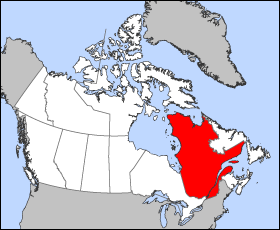You will hear the words below in a
talk here about financing post-secondary education. Match the words with their meanings; write down the letter next to the word.
1. __D_ rely on a. given
2. __E_ eligible b. not enough
3. __A_ granted c. accumulated
4. __B_ insufficient d. depend on
5. __F_ contribution e. qualifying
6. _C__ accrued f. gift
Task 2:
Listen to the talk and answer the questions below.
1. What expenses can the cost of post-secondary education in Canada include?
books and other materials, transportation, food and various necessities.
2. How are government loans administered?
Government programs are the form of financial assistance most often 4. unties to finance university education. Government student loans provide money to 5. eligible students based on demonstrated financial need. Funds are paid out through a combination of the CSL (Canada Student Loan) program and the provincial student loan program .
3. Who can receive government student loans?
Eligible students based on demonstrated financial need
4. Why are government student loans better than personal bank loans?
Government student loans offer a great advantage over personal bank loans as full-time students can qualify to have their 10. recurred interest paid for by the federal and/or provincial government while they are still studying.
5. What other forms of financial assistance are available to students?
Government student loans and other funds are granted only when other financial resources available to students are deemed insufficient to meet a student’s education expenses. These resources include family contributions, part-time work, scholarships, bursaries, etc. If a student is under 19, a parent or a legal guardian or sponsor needs to co-sign the loan document.
6. What is an appropriate title for this talk?
Government student loans
Task 3:
Listen again and complete the text with the missing words.
Par. 1 Studying at a university or college can 1.__involve_____________ various costs. Depending on the program or school, 2. __tuition_____________ can vary from $2,500 to $8,000 or more per year. !e cost of post-secondary education can also include the cost of accommodation___, such as residence fees, as well as the cost of books and other materials, transportation, food and various necessities. Many students in Canada rely on help from the government and financial institutions to finance their education.
Par. 2 Government programs are the form of financial assistance most often 4. __utilized_________to finance university education. Government student loans provide money to 5.____eligible _________ students based on demonstrated financial need. Funds are paid out through a combination of the CSL (Canada Student Loan) program and the provincial student loan program (e.g., OSAP—Ontario Student Assistance Program). Students 6.___apply___________ in their province of residence.
Par. 3 Government student loans and other funds are granted only when other financial 7. _____resources___________ available to students are deemed insufficient to meet a student’s education expenses. These resources include family contributions, part-time work, 8. ___scholarships_____________, bursaries, etc. If a student is under 19, a parent or a legal guardian or sponsor needs to 9. _____co-sign__________ the loan document.
Par. 4 Government student loans offer a great advantage over personal bank loans as full-time students can qualify to have their 10. ___accrued____________ interest paid for by the federal and/or provincial government while they are still studying.
Par.5 Private student loans or lines of credit are offered by many banks and credit unions. The main difference between them and the government programs lies in how the interest 11. __is repaied__________. In private loans or lines of credit, the student is responsible for all the accrued interest as soon as the loan has been 12. _____signed__________. In addition, many medium to large corporations and private organizations also offer scholarships, bursaries and awards for students.Task 4:
Who wouldn’t like to have some free money? Click on this link and search the eligibility criteria for grants, bursaries, and scholarships, plus the estimated amount as well. Share this information with your classmates.
Apply for Canada Student Loans - Eligibility
Eligibility
To qualify, you must:
- be a Canadian citizen, a permanent resident of Canada or designated as a protected person;
- be a permanent resident of a province or territory that issues Canada Student Loans (Note: The Northwest Territories, Nunavut and Quebec operate their own student loan programs. Contact your provincial or territorial student financial assistance office for more information);
- demonstrate financial need;
- be enrolled in at least 60 percent of a full course load (40 percent for students with permanent disabilities) if you are a full-time student;
- be enrolled in 20-59 percent of a full course load if you are a part-time student (if you are a student with permanent disabilities and you are studying between 40-59 percent of a full course load, you can choose to be considered a student in full or part-time studies);
- be enrolled in a degree, diploma or certificate program offered by a designated post-secondary school that runs for at least 12 weeks within a 15-week period;
- pass a credit check if you are 22 or older and are applying for your first Canada Student Loan; and
- not have exhausted your maximum lifetime limit for financial assistance (including interest-free status)




